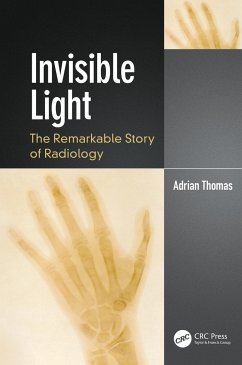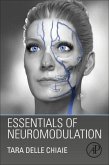The book is a developed history of the radiological sciences - covering the back-story to Röntgen's discovery, the discovery itself and immediate reception the early days of radiology leading to classical radiology (the pre-digital world). The 1970s as the 'golden decade' of radiology will be covered in detail, with the development of CT, MRI and modern interventional radiology. It will appeal to interested members of the public, to those working in the field, and to historians of medicine and science.
Key Features:
- Accessible and engaging, even for readers without any formal scientific training or education
- Authored by an authority in the field
- Contains previously unpublished materials from the author's extensive personal library and archive
Key Features:
- Accessible and engaging, even for readers without any formal scientific training or education
- Authored by an authority in the field
- Contains previously unpublished materials from the author's extensive personal library and archive
"The title of Adrian Thomas's latest book is essentially a play on the title of Sylvanus Thompson the Victorian scientist's book from 1897 'Light visible and invisible'. Radiology historians will also be aware that 'The Invisible Light' is the title of the British Society for the History of Radiology's in house journal which has been edited by Thomas for many years.
The book is very much a personal account of the history of radiology and gives the author a chance to expand on his previous contributions in this field with extracts and references from previous books and contributions published previously in The Invisible Light and other places. The opening chapter covers the discovery of X-rays by Rontgen which leads on nicely to the next chapter on early radiology departments and the problems they faced. The chapter on radiology anatomy serves to remind us all about the importance of understanding the large variations in normal appearances in radiology practice which is a prerequisite for being able to identify pathology accurately.
A chapter covers dangers which were inherent in early X-Ray departments including electrical and radiation injuries. The history of the early X Ray tubes and early plates and screens is of particular interest covering the progress from Crookes and Coolidge tubes through to modern PACS. The book also covers the development of contrast media and there are chapters on CT tomography and MRI.
The final chapter concludes with thoughts on the future of imaging. The text is accompanied by black and white illustrations and useful references for further reading and there is a helpful index. The book is a welcome addition to the literature in this field."
-Dr Arpan K Banerjee, Chair International Society for the History of Radiology (ISHRAD) for THE BRITISH SOCIETY FOR THE HISTORY OF RADIOLOGY
"This book traces the evolution of medical imaging since Röntgen's discovery of X-rays in 1895 to the digital era and the emergence of the speciality of radiology. The title alludes to an early description of X-rays. The subtitle sums up the journey from simple X-rays to MRI and the wide range of advances and personalities involved. The author is an acknowledged expert in the field, in addition to having experienced many of the changes at first hand as a working radiologist. Many images used in the book are from the author's personal collection.
There is a strong biographical element, an example being a whole chapter devoted to the women who played important roles in the establishment of medical imaging. Controversies associated with advances are part of the history and examples such as the attribution debate surrounding the invention of MRI are fully discussed. The transition from the analogue to the digital era is well described including the bewildering number of techniques that became obsolete due to advancing technology.
This important book is likely to become a key reference source on the emergence of medical imaging. It will appeal to the radiological and wider medical and scientific community and for those who wish to 'dip in' for specific information. Some elements will appeal to the public, although the terminology and technical aspects may be challenging."
-Michael Collins for the British Society for the History of Medicine, July 2022.
The book is very much a personal account of the history of radiology and gives the author a chance to expand on his previous contributions in this field with extracts and references from previous books and contributions published previously in The Invisible Light and other places. The opening chapter covers the discovery of X-rays by Rontgen which leads on nicely to the next chapter on early radiology departments and the problems they faced. The chapter on radiology anatomy serves to remind us all about the importance of understanding the large variations in normal appearances in radiology practice which is a prerequisite for being able to identify pathology accurately.
A chapter covers dangers which were inherent in early X-Ray departments including electrical and radiation injuries. The history of the early X Ray tubes and early plates and screens is of particular interest covering the progress from Crookes and Coolidge tubes through to modern PACS. The book also covers the development of contrast media and there are chapters on CT tomography and MRI.
The final chapter concludes with thoughts on the future of imaging. The text is accompanied by black and white illustrations and useful references for further reading and there is a helpful index. The book is a welcome addition to the literature in this field."
-Dr Arpan K Banerjee, Chair International Society for the History of Radiology (ISHRAD) for THE BRITISH SOCIETY FOR THE HISTORY OF RADIOLOGY
"This book traces the evolution of medical imaging since Röntgen's discovery of X-rays in 1895 to the digital era and the emergence of the speciality of radiology. The title alludes to an early description of X-rays. The subtitle sums up the journey from simple X-rays to MRI and the wide range of advances and personalities involved. The author is an acknowledged expert in the field, in addition to having experienced many of the changes at first hand as a working radiologist. Many images used in the book are from the author's personal collection.
There is a strong biographical element, an example being a whole chapter devoted to the women who played important roles in the establishment of medical imaging. Controversies associated with advances are part of the history and examples such as the attribution debate surrounding the invention of MRI are fully discussed. The transition from the analogue to the digital era is well described including the bewildering number of techniques that became obsolete due to advancing technology.
This important book is likely to become a key reference source on the emergence of medical imaging. It will appeal to the radiological and wider medical and scientific community and for those who wish to 'dip in' for specific information. Some elements will appeal to the public, although the terminology and technical aspects may be challenging."
-Michael Collins for the British Society for the History of Medicine, July 2022.








